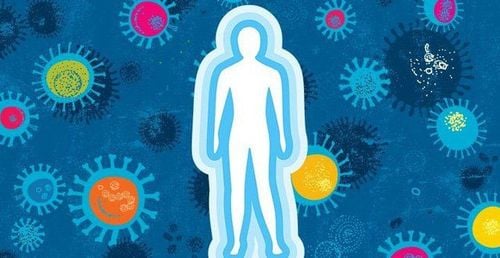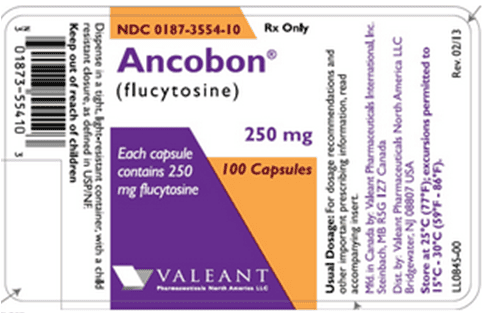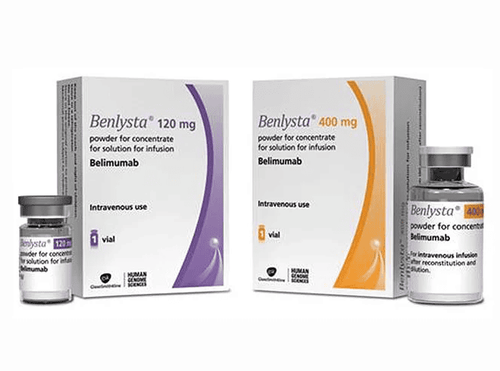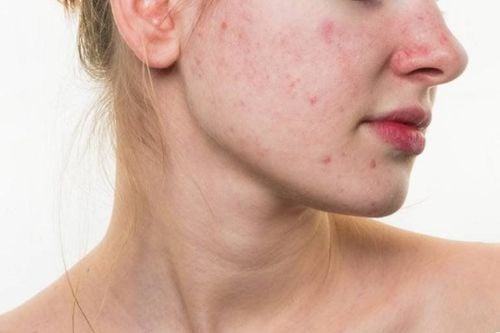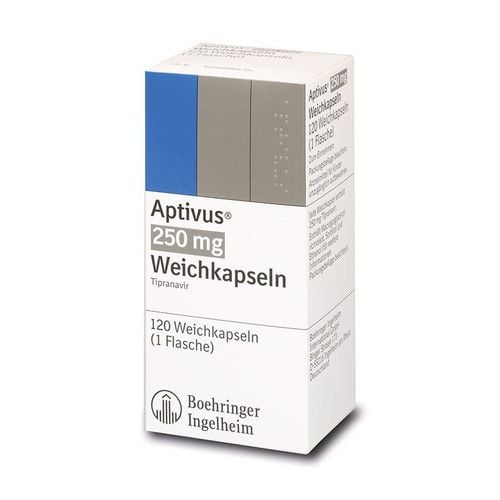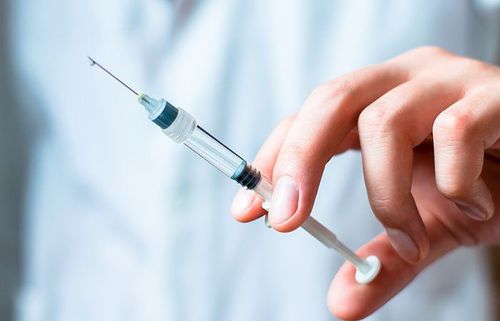This is an automatically translated article.
Immune response or immune response is your body's way of recognizing and fighting off disease-causing microorganisms and substances that are thought to be foreign and harmful to the body. The immune system plays an important role in protecting the body and preventing disease. However, in some cases, the immune system is not working properly, making you sick.
1. Immune system
The immune system is designed to protect the body against foreign invaders or objects that are dangerous to the body. Those agents include:
Microorganisms (commonly referred to as germs such as bacteria, viruses, and fungi) Parasites (such as worms) Cancer cells Transplanted organs and tissues. To protect the body against these agents, the immune system must be able to distinguish between
What belongs to the body (self) What does not belong to the body (not himself or from outside) access into). An antigen is any substance that is recognized by the immune system and can therefore stimulate an immune response. If antigens are considered dangerous (for example, if they can cause disease), they can stimulate an immune response in the body. Antigens can be contained within or on bacteria, viruses, other microorganisms, parasites, or cancer cells. Antigens can also be self-perpetuating — food molecules or pollen, for example.
A normal immune response includes:
Recognition of potentially harmful foreign antigens Activation and mobilization of defenses against it Attack it Control and end the attack. Components of the immune system:
Antibodies (immunoglobulins) are proteins produced by white blood cells called B cells and bind tightly to invading antigens that tag the intruder to attack or directly disable it. The body produces thousands of different types of antibodies. Each antibody is specific for a certain antigen. An antigen is any substance that is recognized by the immune system and can therefore stimulate an immune response. B cells (B lymphocytes) are white blood cells that produce antibodies specific to antigens that stimulate their production. Basophils are white blood cells that release histamine (a substance involved in allergic reactions) and produce substances to attract other white blood cells (neutrophils and eosinophils) to a point of entry. Complement systems include a group of proteins involved in a variety of reactions designed to protect the body by killing bacteria and other foreign cells, making foreign cells more susceptible to damage. readily identified and ingested by macrophages and attracts macrophages and neutrophils to a site where cytokines are various proteins secreted by immune cells and other cells , which act as messengers of the immune system to help regulate the immune response. Dendritic cells are derived from leukocytes. They reside in tissues and help T cells recognize foreign antigens. Eosinophils are bacteria-killing white blood cells and other foreign cells that are too large for macrophages to ingest, and they can help immobilize and destroy parasites and help kill cancer cells. letters. Eosinophils are also involved in allergic reactions. Helper T cells are white blood cells that help B cells produce antibodies against foreign antigens, keep killer T cells active, and stimulate macrophages, allowing them to ingest infected cells or unusually more effective. Tissue compatibility is determined by human leukocyte antigens (self-identifying molecules), which are used to determine whether the transplanted tissue or organ is acceptable to the recipient.
Human leukocyte antigen (HLA) is a group of recognition molecules located on the surface of all cells in an assembly that is nearly unique to each person, thereby helping the body distinguish close to yourself. This class of recognition molecules is also known as the major histocompatibility complex. An immune complex is an antibody attached to an antigen. Cytotoxic T cells are T cells that attach to infected cells and cancer cells and destroy them. Leukocytes are another name for white blood cells, such as monocytes, neutrophils, eosinophils, basophils, or lymphocytes (B cells or T cells). The lymphatic system is a network of lymph nodes connected by lymphatic vessels that help the body transport microorganisms and dead or damaged cells to be filtered out and destroyed. Lymphocytes are white blood cells responsible for acquired (specific) immunity, including antibody production (by B cells), self-differentiation from non-self (by B cells) T) and destroy infected and cancerous cells (by cytotoxic T cells). Macrophages are large cells that develop from white blood cells called monocytes. They feed on bacteria and other foreign cells and help T cells identify microorganisms and other foreign substances. Macrophages are commonly found in the lungs, skin, liver, and other tissues. Mast cells are cells in tissues that secrete histamine and other substances involved in inflammatory and allergic responses. Neutrophils are white blood cells that eat and destroy bacteria and other foreign cells. Phagocytosis is a type of cell that ingests and destroys or destroys invading microorganisms, other cells, and cell fragments. Phagocytosis includes neutrophils and macrophages. Regulatory (suppressor) T cells are white blood cells that help end the immune response. T cells (T lymphocytes) are white blood cells that are involved in acquired immunity. There are three types: Helper, cytotoxic, and regulatory cells.
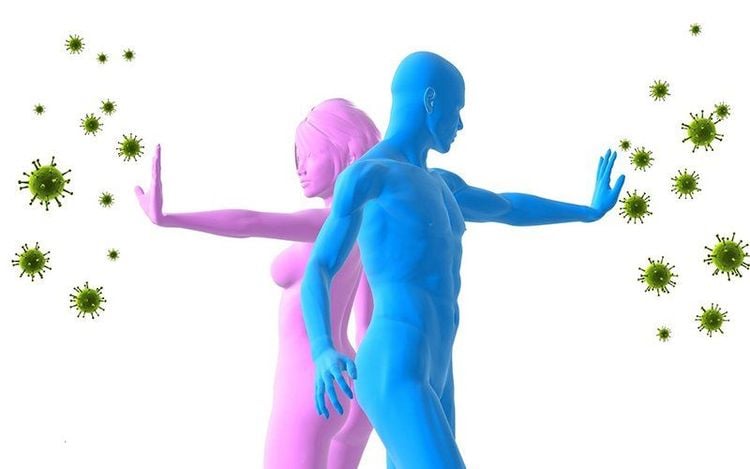
Hệ thống miễn dịch được thiết kế để bảo vệ cơ thể chống lại những kẻ xâm nhập từ bên ngoài vào cơ thể hoặc những vật thể nguy hiểm đối với cơ thể
2. Types of immune responses
The immune system protects the body from potentially harmful agents by recognizing and reacting to antigens. Antigens are substances on the surface of cells, viruses, fungi, or bacteria. Non-living agents such as poisons, chemicals, drugs, and foreign particles (such as a splinter) can also be antigens. The immune system will recognize and destroy, or attempt to destroy, the antigen-containing agent.
Your body's cells have proteins that are antigens. These include a group of antigens known as HLA antigens. Your immune system recognizes these antigens as normal and usually doesn't react to them.
The immune response is divided into the following categories:
Innate immunity Acquired immunity Passive immunity Inflammatory reactions
2.1. Innate immunity
Innate, or nonspecific, immunity is the defense system you have from birth that protects you against all antigens. Innate immunity consists of barriers that prevent harmful agents from entering your body. These barriers form the immune system's first line of defense. Innate immunity includes:
Cough reflex Enzymes in tears and skin oils Mucus traps bacteria and small particles Skin Stomach acid Innate immunity also has a chemical form called humoral immunity natural. Examples include the body's complement system and substances called interferon and interleukin-1 (which causes fever).
If an antigen overcomes these barriers, it is attacked and destroyed by other parts of the immune system.
2.2. Immunity is acquired
Acquired immunity is immunity that develops upon exposure to different antigens. Your immune system builds a layer of defense against that particular antigen.
Immunization (vaccination) is a way to trigger an immune response. Small doses of an antigen, such as a dead or weakened live virus, are given to activate the immune system's "memory". Immune system memory allows your body to respond quickly and efficiently to future exposures.

Chủng ngừa (tiêm phòng) là một cách để kích hoạt phản ứng miễn dịch
2.3. Passive immunity
Passive immunity is caused by antibodies produced in the body not your own. Newborns have passive immunity because they are born with antibodies passed through the placenta from their mothers. These antibodies disappear between the ages of 6 and 12 months.
Passive immunity can also be caused by injection of antiserum, containing antibodies, formed by humans or other animals. It provides immediate protection against an antigen, but does not provide long-term protection. Serum immunoglobulins (injected during exposure to hepatitis) and tetanus antitoxin are examples of passive immunity.
2.4. Inflammatory response
Inflammatory reaction is a condition that occurs when tissues are injured by bacteria, trauma, toxins, heat or any other cause. Damaged cells release chemicals including histamine, bradykinin, and prostaglandins. These chemicals cause fluid (plasma) from blood vessels to leak into tissues, causing swelling. This helps isolate the agent from contact with body tissues.
These chemicals also attract white blood cells called phagocytes that "eat" germs and dead or damaged cells, this is the process of phagocytosis. The phagocytosis eventually dies. Pus is formed from a collection of dead tissues, dead bacteria, and living and dead phagocytic cells.
3. Immune system disorders and allergies
Immune system disorders occur when the immune response, against body tissue, is excessive. Allergies involve an immune response to a substance that most people consider harmless.
If the immune system is not working correctly, it can attack the body's own tissues, causing an autoimmune disorder, such as rheumatoid arthritis, Hashimoto's thyroiditis, or systemic lupus erythematosus (lupus).
Immune system disorders occur when:
The body produces an immune response against itself (an autoimmune disorder). The body is unable to produce the proper immune response against invading microorganisms (an immunodeficiency disorder). The body generates an excessive immune response to foreign antigens that are normally harmless and damage normal tissues (allergic reactions). An effective immune response protects against many diseases and disorders. An ineffective immune response can cause disease to develop. An overreactive or weak immune response, or a false immune response, causes an immune system disorder. An overactive immune response can lead to autoimmune diseases, in which antibodies form against the body's own tissues.
An overactive immune response can cause conditions such as:
Allergies or hypersensitivity. Anaphylaxis: A type of life-threatening allergic reaction. Autoimmune disorder. Immunodeficiency disorder. Serum disease. Rejection of transplant

Phản ứng miễn dịch quá mức có thể gây ra dị ứng
Today, scientists have developed solutions to strengthen the immune system. Vinmec International General Hospital has solutions to strengthen the immune system, you can refer HERE.
Any questions that need to be answered by a specialist doctor as well as customers wishing to be examined and treated at Vinmec International General Hospital, you can contact Vinmec Health System nationwide or register online HERE.
Please dial HOTLINE for more information or register for an appointment HERE. Download MyVinmec app to make appointments faster and to manage your bookings easily.
References: medlineplus.gov, msdmanuals.com




